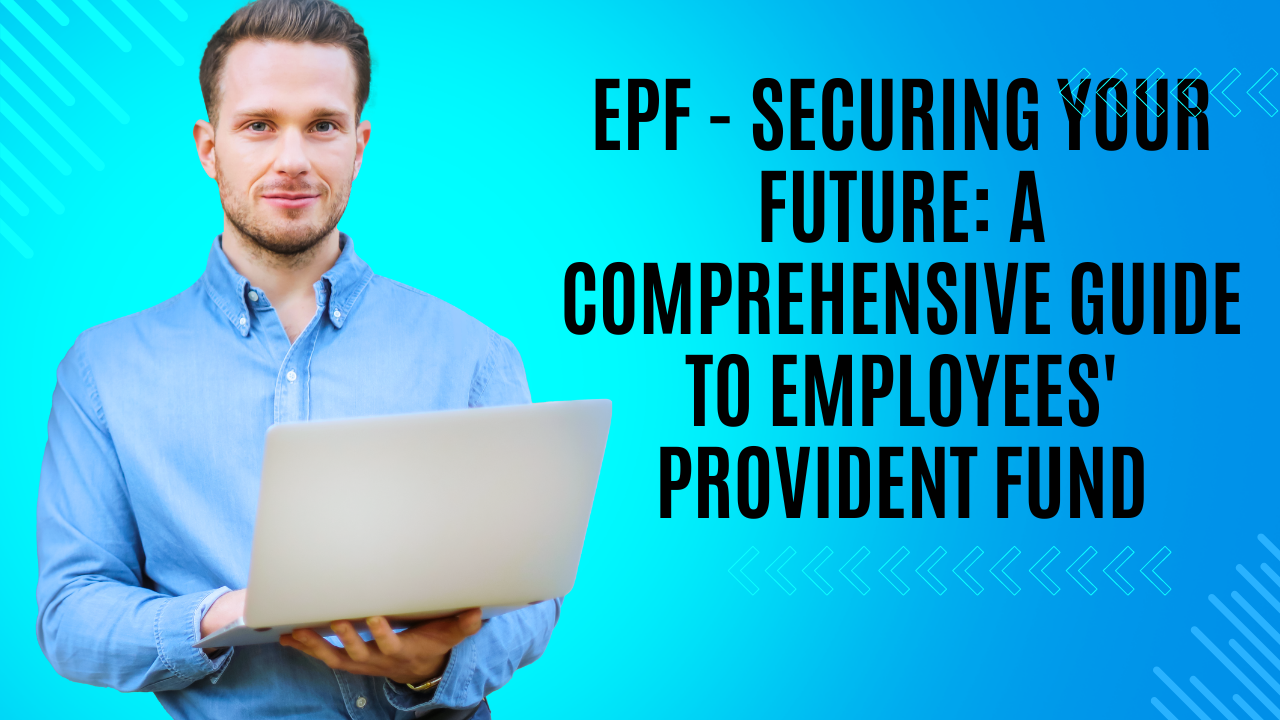The Employees’ Provident Fund (EPF) is a retirement benefits scheme administered by the Employees’ Provident Fund Organization (EPFO) in India. Under this scheme, both the employee and the employer contribute on a monthly basis, each contributing 12% of the basic salary and dearness allowance. EPF serves as a tax-saving instrument and offers attractive interest rates on investments. Notably, a portion of the employer’s contribution (8.33% out of 12%) is allocated to the Employees’ Pension Scheme (EPS). To gain a comprehensive understanding of the EPF scheme, including details about interest rates, eligibility criteria, contribution amounts, withdrawal procedures, and managing one’s EPF account online, continue reading.
Key Points about EPF Contribution:
1. The employer’s contribution is 12%, which comprises 3.67% for the Employees’ Provident Fund (EPF) and 8.33% for the Employees’ Pension Scheme (EPS).
2. Organizations with 20 or fewer employees, those incurring losses equal to or exceeding their net worth at the end of the financial year, or companies declared sick by the Board for Industrial and Financial Reconstruction can contribute 10% towards the EPF.
3. The employer’s total contribution is split, with 8.33% directed towards the Employees’ Pension Scheme and 3.67% towards the Employees’ Provident Fund.
4. All contributions made by both the employer and the employee are recorded and accessible through the EPF member passbook.
5. The employee’s contribution entirely goes towards their own provident fund.
6. In addition to the mentioned contributions, the employer is required to pay an extra 0.5% towards the Employee Deposit Linked Insurance Scheme (EDLI).
7. The employer also incurs administration costs for EDLI and EPF, which stand at the rates of 1.1% and 0.01%, respectively. Consequently, the total contribution made by the employer towards the EPF scheme amounts to 13.61% of the employee’s salary.
Employee’s Contribution towards EPF
The standard contribution rate for employees towards EPF is 12%. However, certain organizations are eligible for a reduced contribution rate of 10%. These organizations include:
1. Firms or organizations with a workforce of up to 19 employees.
2. Industries officially declared as sick industries by the Board for Industrial and Financial Reconstruction (BIFR).
3. Companies experiencing significant annual losses exceeding their net value.
4. Industries such as coir, guar gum, beedi, brick, and jute industries.
5. Organizations with employees falling under the wage limit of Rs. 6,500.
Employer’s Contribution towards EPF
The employer’s contribution towards EPF is calculated at a minimum rate of 12% of the employee’s basic salary, which is capped at Rs. 15,000 per month. However, employers have the option to voluntarily contribute more than this minimum amount. So, the minimum monthly contribution from the employer stands at Rs. 1,800 (12% of Rs. 15,000).
Both the employer and the employee are required to contribute an equal amount, which means each of them contributes Rs. 1,800 per month towards the EPF scheme. In the past, the contribution was based on 12% of Rs. 6,500, amounting to Rs. 780 to be contributed by both parties.
These contributions from both the employer and the employee are deposited into the EPFO (Employees’ Provident Fund Organisation). The EPF serves as a long-term investment fund that enables contributors to sustain an independent life after retirement. It offers a financial cushion to employees during their retirement years.
EPF Eligibility Criteria
To be eligible for the EPF scheme and avail its benefits, employees must become active members of the scheme. From the day they join an organization, they are entitled to benefits, including Provident Fund, insurance, and pension benefits.
Organizations that employ a minimum of 20 workers are obligated to provide EPF benefits to their employees.
However, it’s important to note that the EPF scheme is not applicable to individuals residing in Jammu and Kashmir.
How can Employers Register for EPF?
To register for EPF as an employer, follow the steps below:
1. Begin by visiting the Employees’ Provident Fund Organisation (EPFO) website.
2. Navigate to the “Establishment Registration” section, where you will find an “Instruction Manual” explaining the process of Employer Registration. This includes registering the Digital Signature Certificate (DSC) of the Employer, which is a prerequisite for submitting a fresh application.
3. After going through the instruction manual, you can proceed with the registration process by accepting the “I have read the instruction manual” tickbox and providing the required details.
4. An email with an activation e-link will be sent to you. You must activate the link, and a mobile PIN will also be sent for verification purposes.
5. During the registration, you will need to upload certain documents as part of the registration process.
For employers who are already registered, they can log in using their Universal Account Number (UAN).
It’s important to follow the EPFO’s guidelines and provide accurate information during the registration process to ensure smooth and successful EPF registration for the organization.
Frequently Asked Questions (FAQs) about EPF:
1. What is EPF (Employees’ Provident Fund)?
EPF is a retirement benefits scheme provided by the Employees’ Provident Fund Organisation (EPFO) in India. Both employees and employers contribute to this scheme on a monthly basis.
2. How much do employees and employers contribute to EPF?
In general, both employees and employers contribute 12% of the basic salary and dearness allowance. Out of the employer’s contribution, 8.33% is directed towards the Employees’ Pension Scheme (EPS).
3. Are there any exemptions for EPF contribution for certain organizations?
Yes, organizations with 20 or fewer employees, industries declared as sick by the BIFR, companies incurring annual losses exceeding their net worth, and specific industries like coir, guar gum, beedi, brick, and jute industries may contribute 10% instead of 12%.
4. How can employers register for EPF?
Employers can register for EPF by visiting the EPFO website, going to the “Establishment Registration” section, and following the instructions provided in the “Instruction Manual.” They need to register the Digital Signature Certificate (DSC) and submit required details.
5. What benefits do employees get under EPF?
Employees availing EPF benefits receive a provident fund, insurance benefits, and pension benefits after retirement.
Conclusion:
The Employees’ Provident Fund (EPF) is a vital retirement benefits scheme in India, administered by the EPFO. It offers financial security to employees after their working years. Both employees and employers contribute to the EPF, ensuring a secure future for the workforce. Employers can register for EPF through the EPFO website, and employees can avail themselves of various benefits, including provident fund, insurance, and pension. It’s crucial for organizations to follow the EPF guidelines and make regular contributions to enable a stable and prosperous retirement for their employees.
Read More:
- Post Office Savings Account: Benefits and How to Open an Account
- 7 Simple Ways to Start Saving for a Bright Future
- How can I grow my savings fast?
- Saving Account: Types, Interest rates, and eligibility criteria




